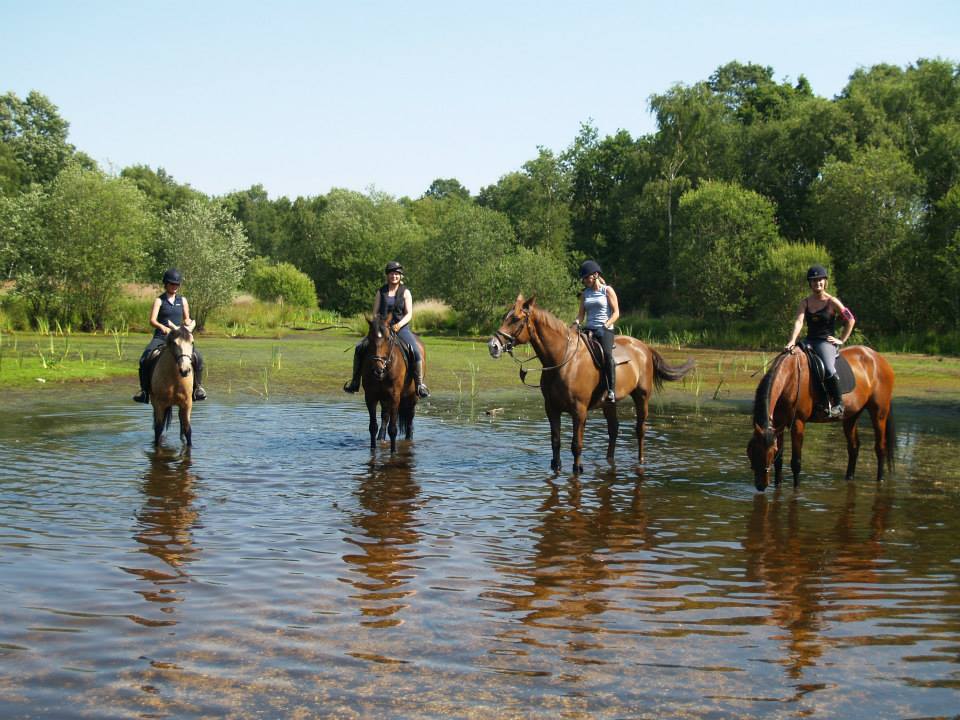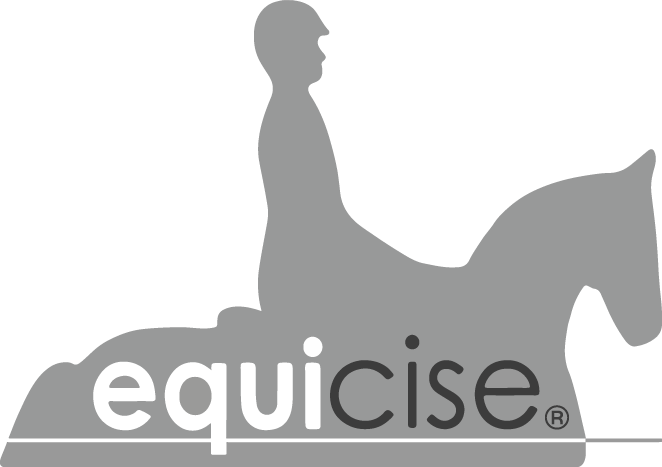12 Jun 9. Relaxation

In our last article (no 8), we talked about the need to be relaxed in order to achieve the independent seat that is a prerequisite for becoming the best rider you can be. This time we’ll discuss ways to help you remain relaxed even when riding an unfamiliar horse in unpredictable circumstances. It is important to realise that to be fully relaxed when riding, you need to be mentally as well as physically relaxed – if you are thinking or worrying about something else in your life, it will spill over into your physical behaviour, causing tenseness that your horse will immediately notice and respond to. All of us have experience of coming to ride when we are frustrated by or anxious about something – heavy traffic when you are already running late, an unexpectedly large bill, family or relationship problems – and those feelings communicate themselves to your horse, typically resulting in a disappointing performance in a lesson or a tense hack. It may not be something we think about in relation to riding, but if you can put aside other thoughts and concerns before you mount your horse, you are sure to do better in your lesson or have a more enjoyable and relaxing ride.
Not everybody is able to make themselves relax at will, but a good start is to pay attention to your breathing, something we typically ignore in the rush of everyday life. A useful and easy way to address anxiety or frustration is to use your breathing to help you to become calmer and more at ease – the underlying technique used in mindfulness meditation. A simple exercise that you can do anywhere involves focusing on your breathing for a couple of minutes, ensuring that your breath out is longer than your breath in. If this is an unfamiliar technique, it may help to place your hands on your belly to begin with: take a deep breath in and feel your belly expand and count to three, then breathe out to a count of five, letting your belly deflate. Breathing in this way is very soothing as it sends a message to your nervous system that it is safe toA relax and return to our natural state, while focusing on counting your breaths in and out will help to distract and calm your mind. You may wish to make this quick and simple exercise part of your normal routine before you even think about mounting your horse.
Physical relaxation requires all your muscles to be relaxed and all your joints to be loose. The joints that we typically focus on are ankles, knees, hips, elbows and shoulders, but you should also take time to check for tension in other areas of your body, including your wrists, fingers, neck and jaw. If there is tension somewhere, it may well manifest itself in the lower leg, which leads to rigidity in the seat which will prevent you from following your horse’s movements. You should also take some time to monitor your breathing – when we are concentrating on training parts of our body, we can sometimes forget to breathe properly.
Riding without stirrups can help you relax and loosen your muscles and joints, something that is easier in walk than in trot or perhaps canter, paces in which a tense rider will typically bounce, which is obviously uncomfortable for the horse (you may find it easier on some horses than others, depending on how smooth or bouncy their paces are). The aim is to learn to use your joints as shock absorbers, particularly your hips, so that you can sit into your horse’s movement without bouncing around on its back – tight hip flexors are a common problem for those of us who spend a lot of the day sitting at a desk. Only when you can eliminate tension throughout your body will you be able to absorb the shock of your horse’s movement and be in a position to communicate clearly with it – if you are bouncing around on its back, your horse’s attention will be diverted from whatever exercise you are working on and it will not focus on your aids.
Lessons on the EQUICISE will enable you to work on these techniques in a safe and controlled environment, so you can relax completely as there will be no external influences to interrupt your progress. The EQUICISE moves both laterally and vertically and gives a very realistic representation of the horse in walk, trot and canter. You can use it to practise following the horse’s movement in all paces and also work on breathing exercises which can be even more effective if you do them with your eyes closed, so you can zone out completely from the world around you and really tune into your body.
Once you are mentally relaxed, you can turn your attention to physically relaxing while working through exercises that will help to develop your balance and improve your riding technique. It is important to learn how to remain relaxed while maintaining good posture and also being able to apply aids correctly and effectively. Attempting to ride accurately in the dressage arena on the EQUICISE is quite challenging, so if you are able to master it, you will have clear evidence of the progress you have made. And once you have succeeded in developing a relaxed and effective independent seat on the EQUICISE, you will be able to transfer your new found skills to your horse.
Book a lesson on the EQUICISE and ask about relaxation techniques.
Practise this on the simulator
In walk or canter, no reins and no stirrups, tighten every part of your body as much as you can, paying attention to each part, then release muscle by muscle, starting with your face, neck, shoulders, arms, elbows, wrists, hands, fingers, chest, waist, abs, back, glutes, hips, legs, knees, calves, ankles, toes. Feel the relaxation, allow your whole body to follow the horse's movement. Tighten your body again. Repeat.
Next time: REVISITING BALANCE




